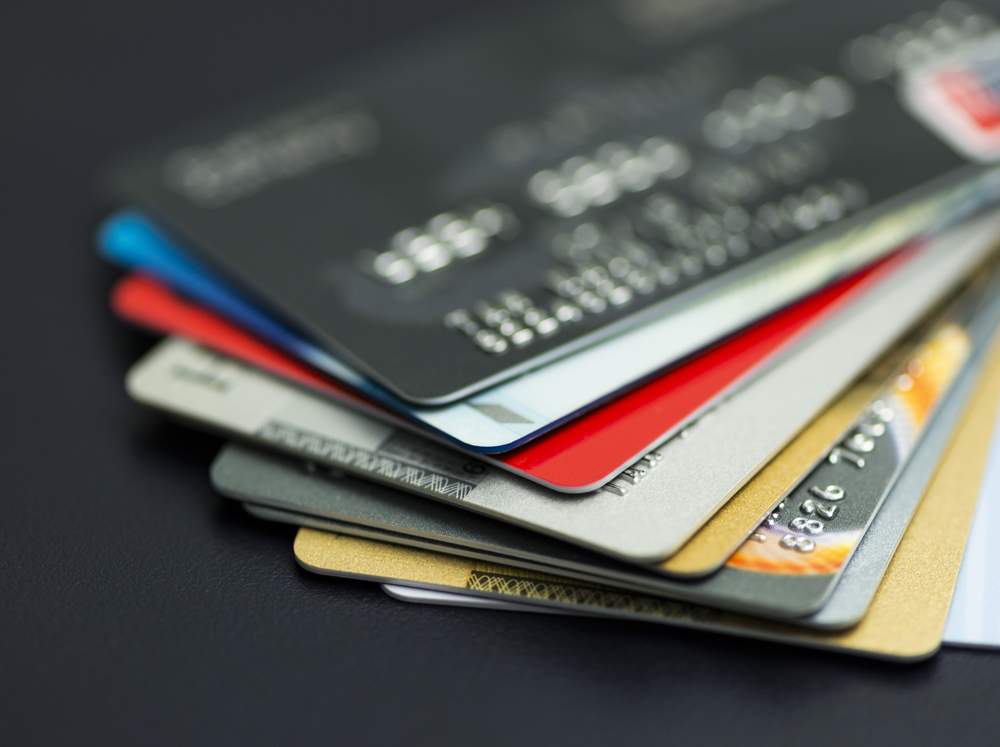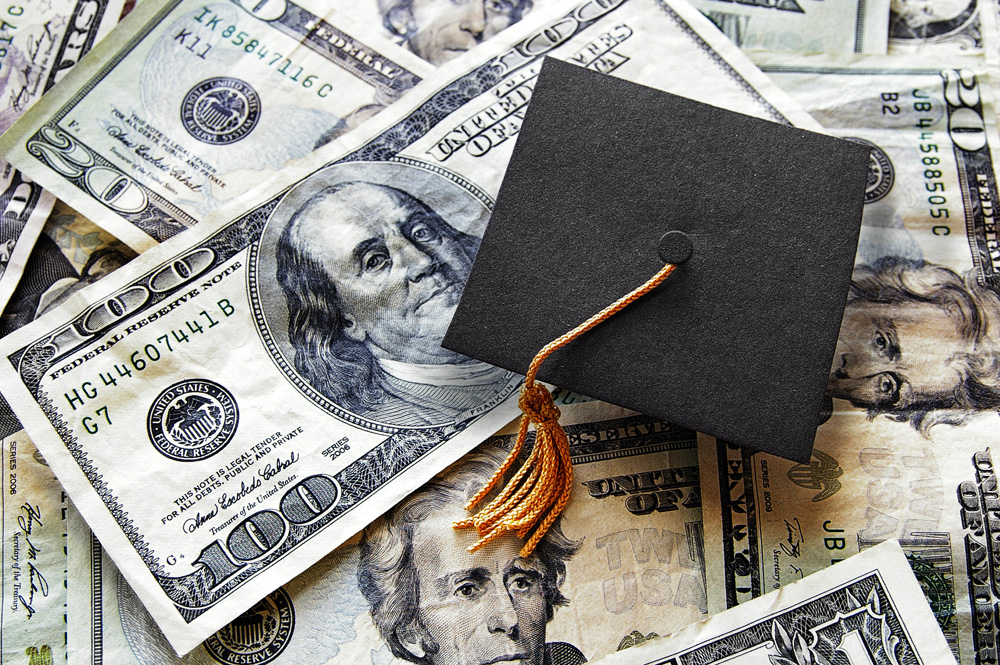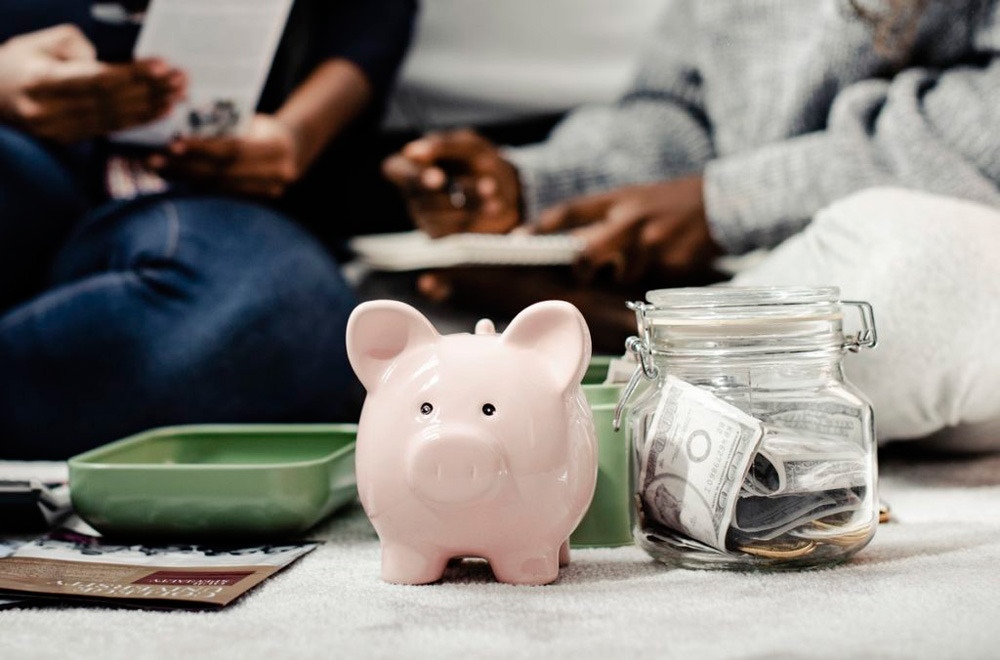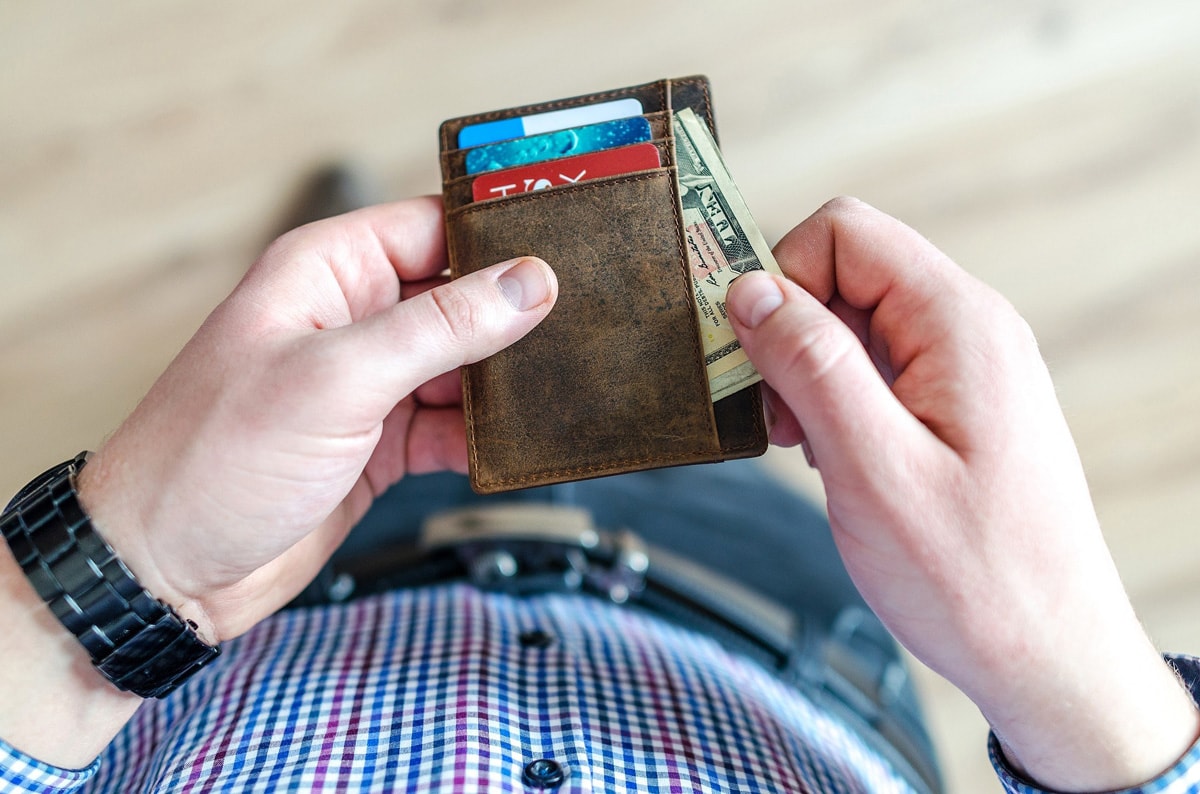18 Ways To Pay Off Debt Faster
It’s our mission to make money matters a little less insane. We provide financial editorial content free for all and are supported by some of our affiliate partners included in this post which earns us a commission. We hope you enjoy our content and subscribe to our newsletter.
If you’re currently in debt or if you’ve ever been in debt, you know just how debilitating it can be. Its psychological impact aside, debt also has the potential to drive your credit score into the ground and affect your ability to secure important loans.
It’s possible that you’re looking at the mountain of debt in front of you and thinking, how am I ever going to get out of this? Fortunately, there are plenty of ways to pay off debt and get back on track.
18 Ways to Pay Off Debt Faster
You might be struggling with one particular type of debt, or you might be battling multiple accounts just to stay afloat.
Whether you’re stuck with student loan debt or outstanding balances across a half-dozen credit cards, here are a handful of tips that will help you pay off debt faster.
Credit Card Debt

Shutterstock
Each year, more and more people fall victim to what has become one of the nation’s leading crises — credit card debt. While credit cards, when used responsibly, are useful tools for building credit, they also present a trap for impulsive buyers.
Most credit card interest rates are significantly higher than rates in most industries. So, the reality is this: when you’re deep in credit card debt, you have a problem on your hands.
If you’ve accumulated a seemingly unmanageable amount of credit card debt, here are a few solutions that will help stop the bleeding.
1. Wipe out your credit card debt with a personal loan
Do you have credit card debt with a high interest rate? If so, carrying a balance from month to month can really cost you.
You can use a personal loan for a number of different purposes, but one of the best reasons is to pay off your credit cards, consolidate debt, and ultimaltely make payments on one account with a lower interest rate. This simple adjustment has the potential to save you thousands of dollars, and checking for lending options won’t even affect your credit score!
After your personal loan pays off your credit card debt, you’ll be left with no credit card bill this month.
Here’s how it works:
- Apply for a personal loan and receive offers (this takes a couple of minutes).
- Approve a personal loan that has a lower interest rate than your credit card debt.
- The personal loan pays off your credit card debt.
- Now make payments on your personal loan with a cheaper interest rate!
Top choice for personal loans:
- Fiona: In just 60 seconds Fiona will match you with the right offer that meets your needs. You’ll receive up to 10 lending options. The service is completely free, safe, and secure.
2. Appeal for a rate cut
If you’re unhappy with your credit card’s APR and are up for a challenge, consider negotiating with your credit card company on a lower interest rate.
As long as you display some level of creditworthiness and prove that you’re not a high-risk borrower, your credit card company may be willing to reach a compromise with you.
While it may be unrealistic to expect a 10% or 15% interest rate cut, you may be able to shave off a few percent. But when it comes to credit card debt, even the smallest APR adjustment may very well save you thousands of dollars in the long run.
3. Use better credit cards
While it’s not the credit card itself, but rather, the borrowing habits that cause you to go into debt, your card’s interest rate might not be doing you any favors.
If you have a credit score of 670 or above, consider getting a card that also offers a 0% intro APR or waived fees on balance transfers. This will allow you to move your balance from the card with the higher rate to the new card without incurring fees. There are balance transfer cards that will give you a 0% intro interest rate for up to 18 months like these right here, allowing you to pay off your debt faster.
Also, if you have at least a fair credit score, consider getting credit cards that offer cashback rewards, such as the Platinum Rewards credit card from Amalgamated Bank of Chicago (ABOC). With this card, you’ll earn a $150 statement credit after spending $1,200 in your first 90 days, and you’ll also earn one point per dollar spent. The Platinum Rewards card also features a 0% intro APR on purchases, and the card comes with no annual fee.
A cashback credit card will allow you to earn rewards on many things you buy every day.
See a top list of cashback cards.
4. Monitor your credit with Credit Sesame
Your ability to get credit cards and loans with better terms largely depends on your credit score. If you’re sitting in subprime territory, you’re going to have difficulty getting a credit card or loan without a high interest rate. So, it’s important that you keep tabs on your credit and make sure it’s trending in the right direction.
If you haven’t checked your credit score in a while or find it difficult to get an updated or accurate score, monitor your credit for free with Credit Sesame.
Through Credit Sesame’s personal credit management system (PCM), you’ll be able to access your free credit score and credit report card, understand what is affecting your credit and how to improve it, leverage your credit for better products, and protect your credit with convenient monitoring and ID protection.
Sign up for free with Credit Sesame and start monitoring your credit today!
Student Loans

Shutterstock
For many young adults, student loan debt is their introduction to the world of borrowing. In fact, 44.7 million Americans carry student loan debt.
Amassing student loan debt over the course of four, six, or even eight years has the potential to paralyze people financially for the next 20+ years of their lives. Fortunately, there are a few ways to take action.
5. Refinance your student loans
If you have student loans with high interest rates, paying off your debt can feel a lot like swimming against the tide — two steps forward, one step back as interest begins to add up with each passing month.
One of the best solutions is to refinance your loan. Refinancing a student loan is the process of getting a new loan with a lower interest rate and better terms to replace a loan that has a higher interest rate. By refinancing, you can potentially save thousands of dollars on your student loans.
While you might assume that this is a lengthy process, there are a handful of lenders online that will help you get new loan options within minutes — all without negatively impacting your credit score through hard inquiries.
Credible and Figure are two top student loan refinancing options:
- Credible: In just two minutes, you’re able to get up to 10 offers from top lenders. With their “best rate guarantee,” Credible promises $200 if you’re able to find a better rate elsewhere (terms apply).
- Figure: Using Figure’s digital paperless application, you can get your personalized refinancing rate in a matter of minutes. Refinancing comes without prepayment or origination fees, an auto pay discount, and you’re also given a 12-month forbearance period in case it is ever needed.
6. Claim tax credits and deductions
As long as you’re enrolled at an eligible institution and meet a few other qualifications, you may be able to receive tax credits and deductions. Most notably, you may be eligible for the American Opportunity Credit or the Lifetime Learning Credit.
With the American Opportunity Credit, you can claim up to $2,500 per year for the first four years of post-secondary education — 40% of which is refundable.
With the Lifetime Learning Credit, you can claim up to $2,000 per year of post-secondary education. This includes any undergraduate and graduate degree courses, as well as other post-graduate courses.
While these tax benefits are unlikely to match or exceed the amount of your student loans, they will certainly help you recoup some of the costs.
7. Make payments during grace periods
If you have unsubsidized student loans and are granted a grace period during which there are no obligations to make any repayments, consider the amount of money you can save by paying something towards the principal.
Taking it easy during your loan’s grace period (typically six months) may provide some temporary financial relief, but getting ahead during your grace period will result in the following:
- Less interest is applied to your balance
- Less capitalized interest is applied to your balance
- Your student loan debt is paid off faster
Mortgages

Jesse Roberts on Unsplash
In 2019, the average mortgage debt is $202,284, which means that, if you have a mortgage, it is likely the largest of all your debts. But this also means that it offers the greatest potential for savings.
You can pay off debt faster and save money in the process with a few different adjustments. Let’s take a look at them.
8. Refinance your mortgage
Even if you feel as though your mortgage loan has a reasonable interest rate, you may be able to get another loan with a lower interest rate and better terms.
The process of replacing your current mortgage loan with one that is more cost-effective for you is called mortgage refinancing. Many experts believe that even a very small interest rate decrease is enough to incentivize refinancing your mortgage.
There are a few different tools online that can help you find better mortgage loans quickly without impacting your credit score.
Excellent options include loanDepot and Figure:
- loanDepot: With more than $70 billion in mortgages refinanced, loanDeport has a track record of finding home loans with better terms and lower interest rates for homeowners across the U.S. With loanDepot’s mello smartloan, homeowners get a speedy, paperless refinancing process and the potential to close out a loan in as few as eight days. Fill out a questionnaire and get refinancing options through loanDepot!
- Figure: With a few minutes to fill out a digital application, you can get mortgage refinancing options through Figure with the potential to close out a deal in as few as 10 days. Obtaining a cash-out loan will allow you to get funds for an amount larger than your original mortgage loan. You can use this money to consolidate other debts and tie them to a lower interest rate. Start the refinancing process with Figure!
9. List unused space on Airbnb
While you’re busy paying off your mortgage, consider turning your unused space into an Airbnb to make some extra cash. The process of getting your space listed is quick and easy, and Airbnb even provides hosts with protection against property damage and poor customer behavior.
Particularly if you have an area or floor of your home that is well kept and attractive to potential renters, you can make great money through Airbnb. Using Airbnb’s estimate tool, you can even get a quick idea of what your potential earnings might be as a host.
10. Remove private mortgage insurance (PMI)
If you’re a new homeowner, you’re probably aware of the extra cost associated with private mortgage insurance (PMI).
Unless you made a down payment of 20% or more, you’re likely dealing with PMI, which can account for .5% – 1% of the amount of your loan annually. If your mortgage is $200,000, this means that you can expect to pay an additional $1,000-$2,000 each year.
However, PMI is typically only required until you owe 80% or less on your home loan.
So, what’s the key here? Getting 20% of your loan paid off, of course. If at all possible, make larger payments or extra payments early on, so that you can eliminate PMI entirely.
11. Challenge your property assessment
Property taxes are determined by the value of your home. So, when your home assessment rolls around, it’s in your best interest to get a fair assessment of your home in order to keep your property tax bill down.
According to the National Taxpayers Union, approximately 30% – 60% of taxable property is over-assessed, but fewer than 5% of property owners ever argue their assessments.
If you’ve received a bad assessment, take steps to challenge the assessment so that your tax bill is manageable each year!
12. Modify your loan
If you’re really struggling to make your mortgage payments each month or anticipate getting behind in the future, you might consider a loan modification. This adjustment may ultimately help you avoid delinquency, and eventually, foreclosure.
With a loan modification, you agree to new terms for your mortgage so that you’re better positioned to make your monthly payments. However, keep in mind that modifying and refinancing are not the same. Whereas refinancing involves working with a new lender, a loan modification involves your current lender. So, with a loan modification, the lender is typically only willing to make modifications that will benefit them.
In many cases, the homeowner who applies for a loan modification ends up in a worse position because of it. For this reason, it’s wise to seek professional advice to determine whether a loan modification is an advantageous option for you.
Auto Loans

Ryan Spencer on Unsplash
Because a car is a depreciating asset, it’s likely that your car may be worth very little by the time you’ve finished paying it off. If you’re debating whether your car is even worth the trouble, considering taking action to reduce your auto loan debt sooner.
13. Refinance your auto loan
We all love the thrill of driving a brand new car off the dealership lot. In the midst of the adrenaline rush, however, many buyers take on auto loans that are sure to come back and bite them down the road.
If you suspect that your current auto loan is costing you hundreds or perhaps thousands of unnecessary dollars, one solution is to refinance your auto loan. Through refinancing, you can replace your current auto loan with one that offers better terms and a lower interest rate, saving you a ton of money as a result.
A great place to get car refinancing options is myAutoloan.com. Simply fill out a short questionnaire and you’ll receive up to four offers in minutes. Compare interest rates and monthly payments and determine whether refinancing will save you money over the journey. The service is free, quick, and easy to use. See all of your refinancing options with myAutoloan.com!
Personal Debt in the U.S. Hits an All-Time High
Now at a record of $4.1 trillion (as of September 2019), consumer debt has skyrocketed past previous levels, including those of the financial crisis of 2008. Meanwhile, total household debt, which also accounts for mortgages, has increased to approximately $14 trillion.
For an even greater perspective, consider that the average American household carries $136,355 in total debt. When you factor in bad spending habits and interest rates, the nature of debt is to keep growing; and the only way to combat debt is to be steadfast in your effort to reduce it.
General Debt Repayment Tips

rawpixel
Regardless of the type of debt you’re dealing with, there are strategies you can employ and different adjustments you can make to get that debt paid off. Let’s look at a few of the most effective approaches to paying off any type of debt.
14. Pay debt faster when possible
It’s typically in your best interest to pay off debt faster whenever possible.
While it may be tempting to keep a little extra money stashed away in case of emergency or add more money to your savings account, this usually isn’t a wise move when you’re sitting on a significant amount of debt.
Why?
Because every time you owe interest on your debt, you lose money. Unless your savings account’s interest rate is higher than that of your other accounts (which is unlikely), you can’t save enough to make up for what you’re losing through debt.
15. Snowball method: pay off debt with the lowest balance first
If you’re managing multiple types of debt, you should come up with a plan to pay off your debt strategically.
One of the most common approaches is called the snowball method.
Suppose you have three accounts:
- A $500 credit card bill
- A $1,000 credit card bill
- A $12,000 auto loan
Using the snowball method, you’ll first pay your minimum balances and monthly payments, and then any additional money you can put towards debt goes into your smallest account—the $500 credit card bill. You’ll then work on the $1,000 credit card bill, and finally, the $12,000 auto loan.
The snowball method is often employed because of its psychological benefits. You’ll see your smallest accounts paid off in full, and that will inspire and motivate you to tackle your larger accounts.
16. Avalanche method: pay off debt with the highest interest rate first
The second method commonly used to tackle debt is the avalanche method.
Using the same example above, consider the interest rates of each of your accounts:
- $500 credit card bill: 6% APR
- $1,000 credit card bill: 15% APR
- $12,000 auto loan: 8% APR
With the avalanche method, you’ll first pay your minimum balances and monthly payments, and any extra money goes toward the account with the highest interest rate. This means that you’ll work on paying off your $1,000 credit card bill first, followed by your $12,000 auto loan, and then your $500 credit card bill.
The avalanche method allows you to pay off all of your debt in the fastest way possible. Less interest ultimately means less debt, so eliminating your high-interest accounts offers the quickest path towards a debt-free lifestyle.
17. Start a side hustle to earn additional income
In the past, you’d have to go out and get a second job if you wanted to earn additional income. Today, there are plenty of side hustle ideas that will allow you to use your own tools and resources to make money.
With your car alone, you can start several side hustles that add significant money to your total income.
18. Cut unnecessary costs
While you’re thinking about ways to generate additional streams of income through a side hustle or two, also consider that there are ways to save money simply by eliminating unnecessary expenses from your budget.
Not only will this put more money in your pocket that can be used to pay off debt, but it may also limit some of your credit card usage.
Eating out might just be the biggest budget killer. It’s not only expensive to eat out regularly (especially once you add the cost of tax and a tip to your meal), but it’s also very convenient. Eating out a few times a month can easily turn into five or six times a week, if not monitored closely.
Insurance also doesn’t have to be a budget killer. You don’t have to skimp on coverage to get a competitive, affordable rate. Get quotes from several companies, participate in discount programs (i.e. paperless, good student, etc.), and consider paying for six months upfront.
Pay Off and Stay Out of Debt
For most families, taking on at least some debt is inevitable. Whether it’s a mortgage or a car loan, we can’t always have the things we need without borrowing money. But America’s $1.077 trillion revolving debt crisis (as of September 2019) — which consists primarily of credit card debt — speaks to an issue that goes beyond borrowing money for basic necessities.
Although an enormous amount of debt can quickly become a catalyst for stress, fear, and even health complications, too many people are unwilling to make changes to their current lifestyles.
It’s important to note that these tips alone won’t get you out of debt. But when combined with sacrifice and discipline, they will help you pay off debt in the quickest and most efficient way possible.










































